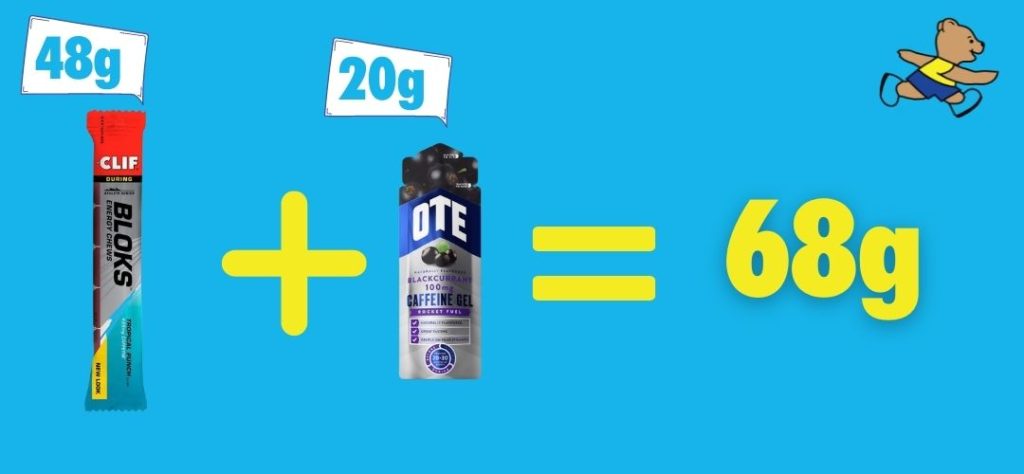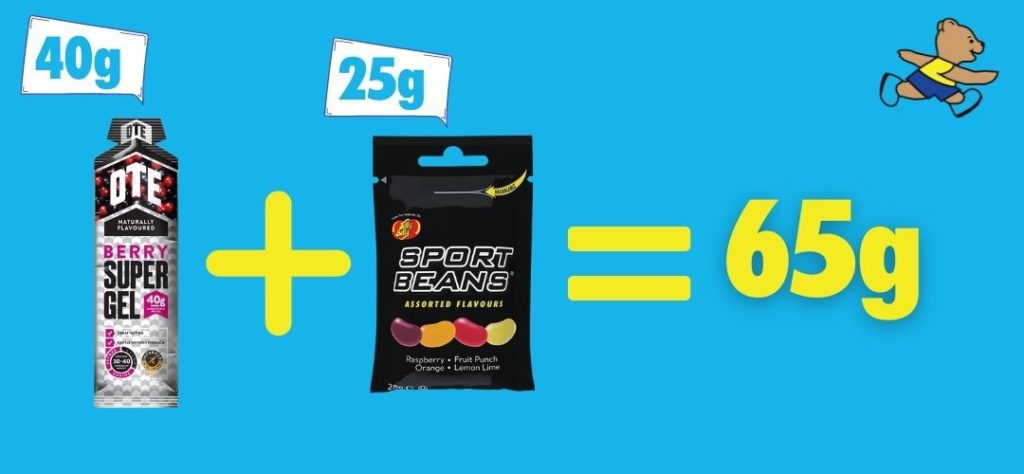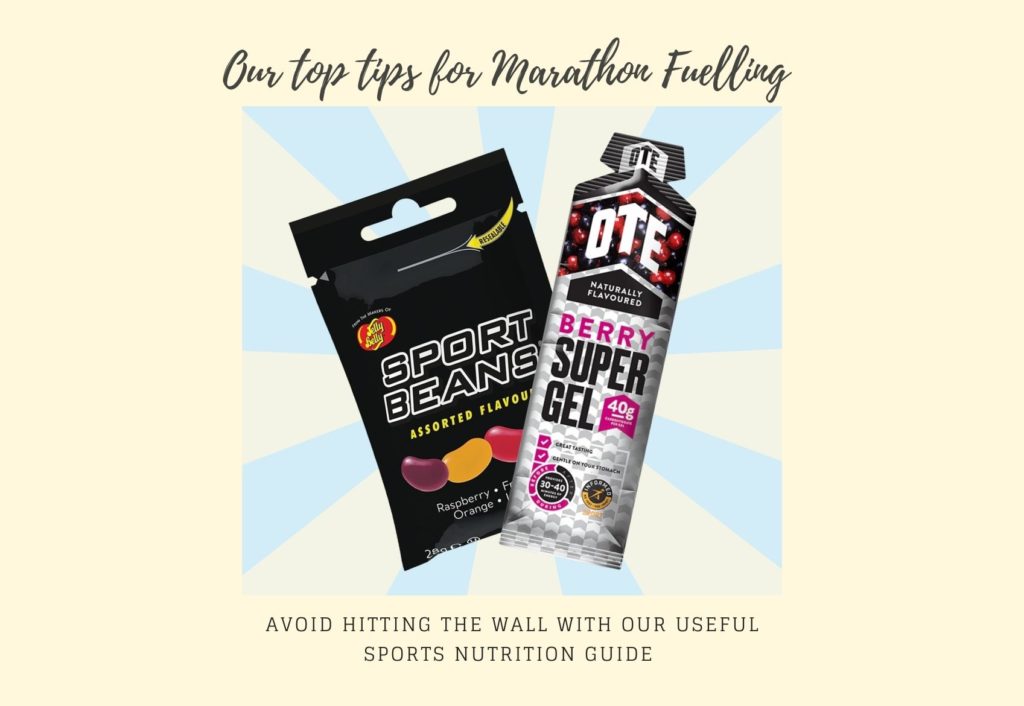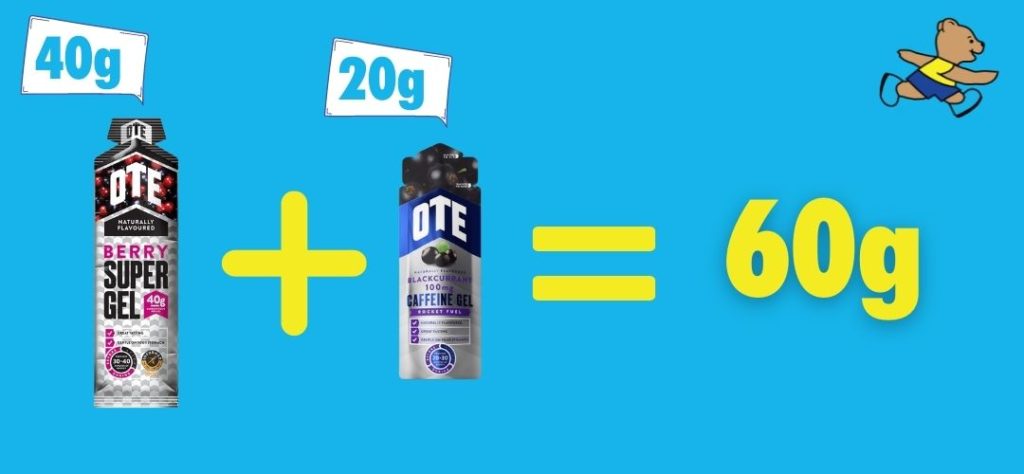If you want to improve your performance when training for a marathon it’s important to put fuelling strategies in place to help you perform at your best and avoid the dreaded bonk. It can be hard to take on board energy when you are running so it’s important to practice in training ahead of race day.
We wanted to share some of our favourite products to help you fuel optimally, especially for your longer runs.
How to fuel for your longer runs
As a general guide, you should be aiming to consume around 60g of carbohydrates per hour of running. This seems like a lot, but with practice, it’s actually easier than you think to achieve.
An OTE Energy Gel contains 20g of carbohydrates and the new OTE Berry flavoured Super Gels contain a whopping 40g of carbohydrates. So with just two gels, it’s easy to see how you can achieve this target of 60g of carbohydrates per hour.
OTE gels contain both carbohydrates for energy and electrolytes to replenish salts lost when sweating, so it’s not necessary to take with water, however, we’d recommend a quick swig to wash it down, perfect if you can time your gels with the drink stations on the marathon course.
OTE SuperCarbs Review
Personally I use OTE SuperCarbs when running the marathon as we’re fortunate to have our own personalised bottles on the course. While not everyone will have this luxury the SuperGels are the perfect alternative to ensure you’re getting adequate fuel on during the marathon. With the SuperGels you’re getting more bang for your buck and taking just two SuperGels is the equivalent to taking four standard 20g gels.
This is great because it means not only do you not need to carry as many gels with you, but also you’re having to take less on during the run. When training if I don’t have my coach (or Sophie!) on the bike I’ll often turn to gels as they’re so much easier to carry compared to bottles when running and saves having to stop mid run or do loops from the car as I’m confident that the gels will help give me all the fuel I need to complete my run.
–Jonny Mellor
How to fuel when you don’t like gels
Perhaps you’re not keen on gels, in which case have you tried the Cliff Energy Bloks? Tasty sweets mid-race anyone? These chewy cubes of energy also contain caffeine the perfect mid-race pick up! One packet of chews will give you 48g of carbohydrates per hour according to the manufacturers, however, this will be a lot for many runners, so perhaps having a few cubes and a gel during the hour, along with some water to maintain your hydration levels could be a good solution?

The Bloks have a more food-like texture vs gels so it will come down to personal preference and also what you feel comfortable carrying with you on the move.
From our own testing, we found the gels didn’t melt or stick together when teaming up with an SPI Running Belt and proved to be a great way of topping up our fuel mid-run.

Another alternative is Jelly Bean Sport Beans. The only problem with the beans is it’s hard not to just eat them as a snack when not running! They definitely taste amazing and pack 25g of carbohydrates.
Did you know, as well as helping fuel your long run, fuelling optimally on the run can help kick start the recovery process as your glycogen stores will already be on their way to being sufficiently replenished.
How frequently should I take fuel during a marathon?
This is a common question we get in the den. While this is down to personal preference, we always think that going via time or distance is useful as it’s a nice reminder when you need to take fuel on. Whatever you do though, practice in training first. For example, if you plan on race day taking a gel every 5km, then start doing this in training to train your stomach to both absorb the carbohydrates and get used to taking them on the move. Another useful tip is to set a timer to remind you to fuel if you’re planning on taking a gel or drink. It is always wise to start a marathon with a plan that you have tried and tested in training and will over time become second nature. Remember, a normal OTE energy gel will deliver 20g of carbohydrates, meaning the gel can deliver 20-30 minutes of energy when exercising at a moderate to intense pace, so bear this in mind when making your calculations.
Choosing what you want to fuel your exercise and training with is very much down to personal preference. There’s a range of other gels and fuelling products on the market and we’d always recommend trialling a few options in training as different products will work differently for different runners, however, hopefully, you’ve found the above article interesting and given you some food for thought when training for your next marathon!
Go with what you train with!
Our final tip to finish on is to try and avoid using any sports nutrition you are not familiar with on the big day (even if it’s free!) So either plan and practice using the products the race organiser is providing in training or make sure you take sufficient supplies of your own nutrition.
If you have any questions please do let us know or call into the Bears Den for a chat as we’re always happy to talk and share our experiences!


